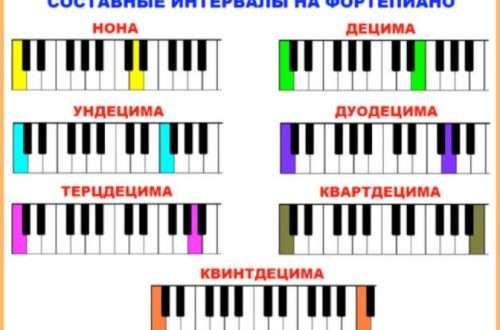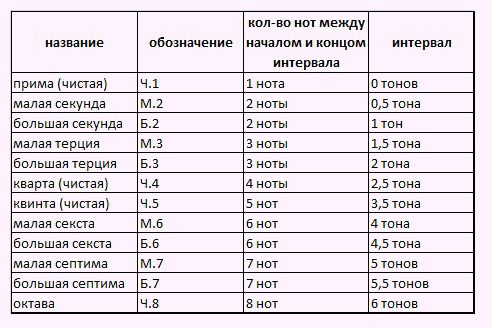Chord structure: what are chords made of, and why do they have such strange names?
Contents
So, chord structure is the topic that we will develop today. And, first of all, let’s turn to the definition of a chord, clarify what it is.
A chord is a consonance, a sound complex. In a chord, at least three sounds must sound at the same time or one after another in turn, because consonances in which there are only two sounds are called differently – these are intervals. And yet, the classic definition of a chord states that the sounds of the chord are either already arranged in thirds, or they can be arranged in thirds when rearranged. This last point is directly related to the structure of the chord.
Since modern harmony has gone far beyond the norms established by the music of classical composers, this last comment regarding the arrangement of sounds in a chord by thirds does not apply to some modern chords, since their structure is based on a different principle of chord construction. Consonances have appeared in which there may be three sounds or even more, but no matter how hard you want, even if you try very hard, you can’t arrange them by thirds, but only, for example, by sevenths or seconds.
What is the chord structure?
What follows from all this? Firstly, it follows from this that the structure of chords is their structure, the principle by which the tones (sounds) of a chord are arranged. Secondly, from the above it also follows that there are two types of chord structure: terza (classic version) and Netertzian (mainly characteristic of the music of the 20th century, but it was also encountered earlier). True, there is also a type of chords with the so-called – with replaced, omitted or additional tones, but we will not consider this subtype separately.
Chords with tertian structure
With a tertian structure, chords are built from sounds arranged in thirds. Different types of chords have this structure: triads, seventh chords, non-chords, along with their inversions. The figure shows just examples of such chords with a tertian structure – as Alexey Kofanov says, they are somewhat reminiscent of snowmen.
Now let’s look at these chords under a magnifying glass. The structure of chords is formed by the intervals that make up a given chord (for example, the same thirds), and the intervals, in turn, are made up of individual sounds, which are called the “tones” of the chord.
The main sound of a chord is its base, the remaining tones will be named in the same way as the intervals that these tones form with the base are called – that is, third, fifth, seventh, none, and so on. The names of all intervals, including wide compound ones, can be repeated using the materials on this page.
The structure of the chords is reflected in their name
Why do you need to determine the name of the tones in a chord? For example, in order to give it a name based on the structure of the chord. For example, if an interval of a seventh is formed between the base and the highest sound of a chord, then the chord is called a seventh chord; if it is a nona, then it is a nonchord; if it is an undecima, then, accordingly, it is called an undecimac chord. Using structure analysis, you can name any other chords, for example, all inversions of the dominant seventh chord.
So, in D7, in its basic form, all sounds are arranged in thirds and between the base of the chord and its highest tone an interval of a minor seventh is formed, which is why we call this chord a seventh chord. However, in D7 calls the arrangement of tones is different.
The first inversion of this seventh chord is the fifth-sixth chord. Its name is given by how the seventh (upper tone of D7) and the root tone relate to the bass of the chord, and what intervals are formed in this case. The main tone in our example is the note G, B is the third, D is the quit, and F is the seventh. We see that the bass in this case is the note B, the distance from the note B to the note F, which is a seventh, is a fifth, and to the note G (the root of the chord) is a sixth. So it turns out that the name of the chord is made up of the names of two intervals – fifths and sixths: fifth-sixth chord.
Tertz-quart chord – where does its name come from? The bass of the chord in this example is the note D, everything else is called as before. The distance from re to fa (septim) is a third, the interval from re to sol (base) is a quart. Now everything is clear.
Now let’s deal with the seconds chord. So, the bass note in this case becomes the lady septima itself – the note F. From F to F is a prima, and the interval from the note F to the base G is a second. The exact name of the chord would have to be pronounced as a prime-second chord. In this name, for some reason, the first root is omitted, apparently for convenience, or perhaps because there is no interval between the seventh and the seventh – there is no repetition of the note F.
You can object to me. How can we classify all these fifth-sexts with second chords as tertian chords? Indeed, in their structure there are intervals other than thirds – for example, fourths or seconds. But here you need to keep in mind that these chords are not nuggets by nature, they are just inversions of those snowman chords, the sounds of which feel great when located in thirds.
Chords with Netertz structure
Yes, there are such things too. For example, fourth, fifth consonances or the so-called “clusters of seconds”, try to arrange their sounds by thirds. I’ll just show you examples of such chords, and you can decide for yourself whether they are ordinary or not ordinary. See:
Conclusions
Let’s finally stop and take some stock. We started by defining a chord. A chord is a consonance, a whole complex of sounds, containing at least three notes sounding simultaneously or not simultaneously, which are organized according to some structural principle.
We named two types of chord structures: tertian structure (characteristic of triads, seventh chords with their inversions) and non-tertian structure (characteristic of second clusters, clusters, fifths, fourths and other chords). After analyzing the structure of the chord, you can give it a clear and precise name.



